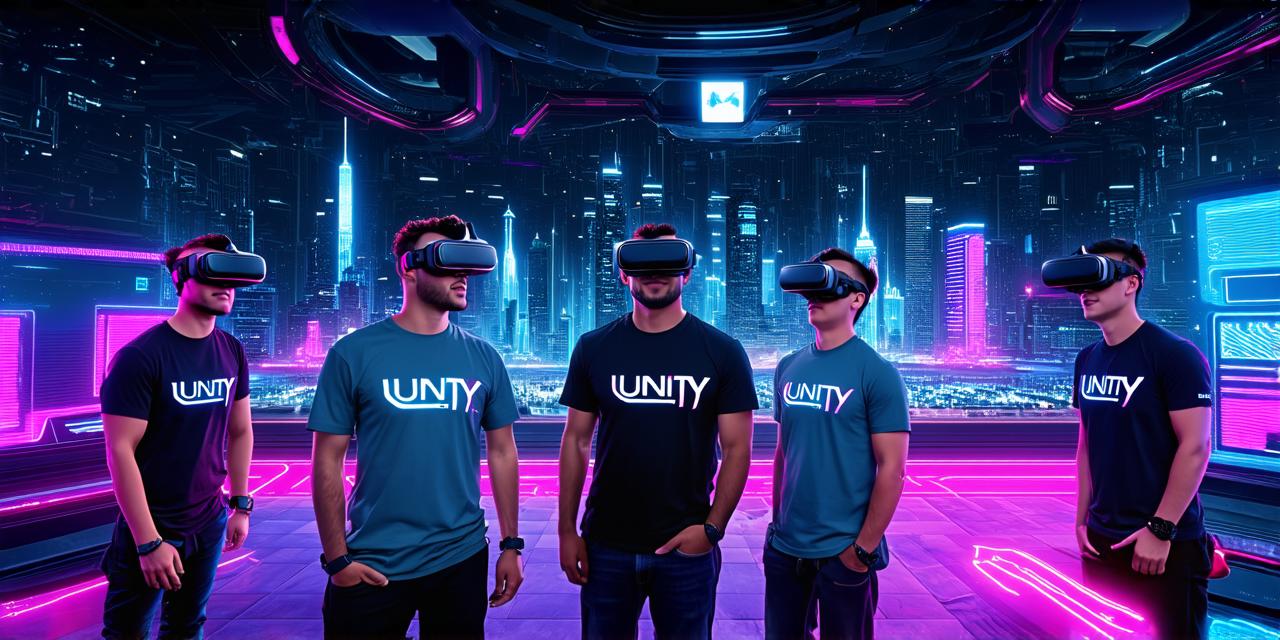Virtual reality (VR) technology has come a long way since its inception, and developers are increasingly looking for ways to create immersive and engaging experiences. One of the most popular tools for VR development is Unity, a powerful game engine that can be used to create everything from simple 2D games to complex 3D simulations.
1. Start with a clear understanding of the market
Before you start creating your VR game or simulation, it’s important to have a clear understanding of the target audience and what they are looking for. This will help you design an experience that is both immersive and engaging. To do this, you can conduct market research and gather feedback from potential users. You can also use analytics tools to track user behavior and see what is working and what isn’t.
2. Choose the right platform
When it comes to VR development, there are several different platforms to choose from, including Oculus Rift, HTC Vive, and PlayStation VR. Each platform has its own strengths and weaknesses, so it’s important to choose the one that best fits your needs and target audience. Unity supports all of these platforms, making it a versatile choice for VR development.
3. Create an engaging narrative
One of the key elements of any successful VR experience is a compelling narrative. This can be anything from a simple storyline to a more complex simulation. To create an engaging narrative, you need to start by identifying the main objectives and goals of your game or simulation. From there, you can work on developing a story that will keep players engaged and invested in the experience.
4. Optimize for performance
VR development can be resource-intensive, so it’s important to optimize your game or simulation for performance. This includes everything from reducing frame rates to minimizing loading times. You can also use techniques like texture compression and level of detail (LOD) to improve performance and reduce the overall load on the system.
5. Use social features to promote engagement
Social features are a great way to promote engagement and build a sense of community around your VR experience. This can include things like leaderboards, achievements, and user-generated content. You can also use social media to connect with potential users and gather feedback on your progress.
6. Stay up to date with the latest technology
VR technology is constantly evolving, so it’s important to stay up to date with the latest advancements in order to take advantage of new features and capabilities. This includes keeping an eye on emerging technologies like haptic feedback and eye-tracking, as well as staying current with the latest developments in hardware and software.
7. Optimize for SEO
To help your VR content rank higher in search engines and attract more traffic, you need to optimize it for SEO. This includes using relevant keywords and phrases, creating compelling meta descriptions and titles, and including high-quality images and videos. You can also use tools like Google Analytics to track user behavior and see what is working and what isn’t.
8. Test and iterate
Finally, it’s important to test your VR game or simulation thoroughly and iterate on the design as needed. This includes testing for bugs and performance issues, gathering feedback from users, and making adjustments based on that feedback. By testing and iterating, you can create a more polished and engaging experience that will keep players coming back for more.
Summary
VR development with Unity is an exciting and rapidly evolving field. With the right approach, you can create immersive and engaging experiences that will capture the imagination of users around the world. By following these tips and tricks, you can maximize your VR development efforts and create a successful game or simulation that will stand out in a crowded market. Remember to stay up to date with the latest technology, optimize for SEO, and test and iterate to ensure that your VR experience is both immersive and engaging.
